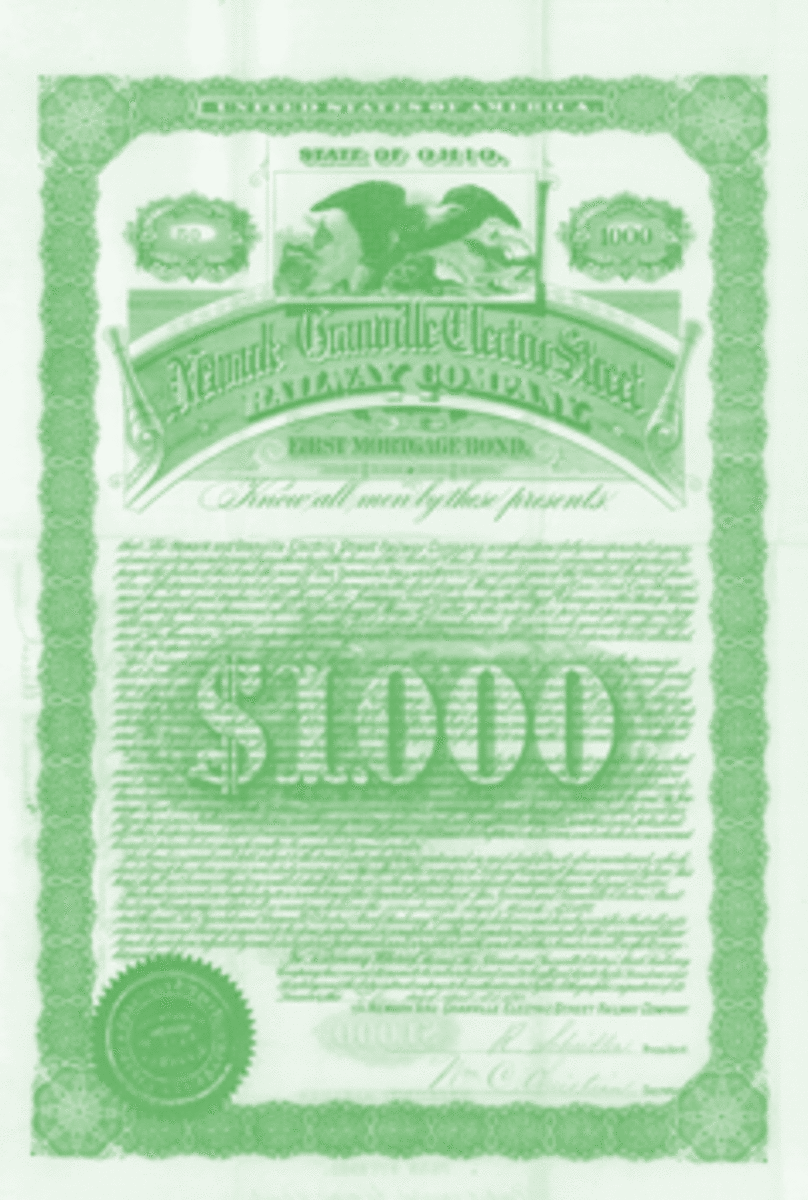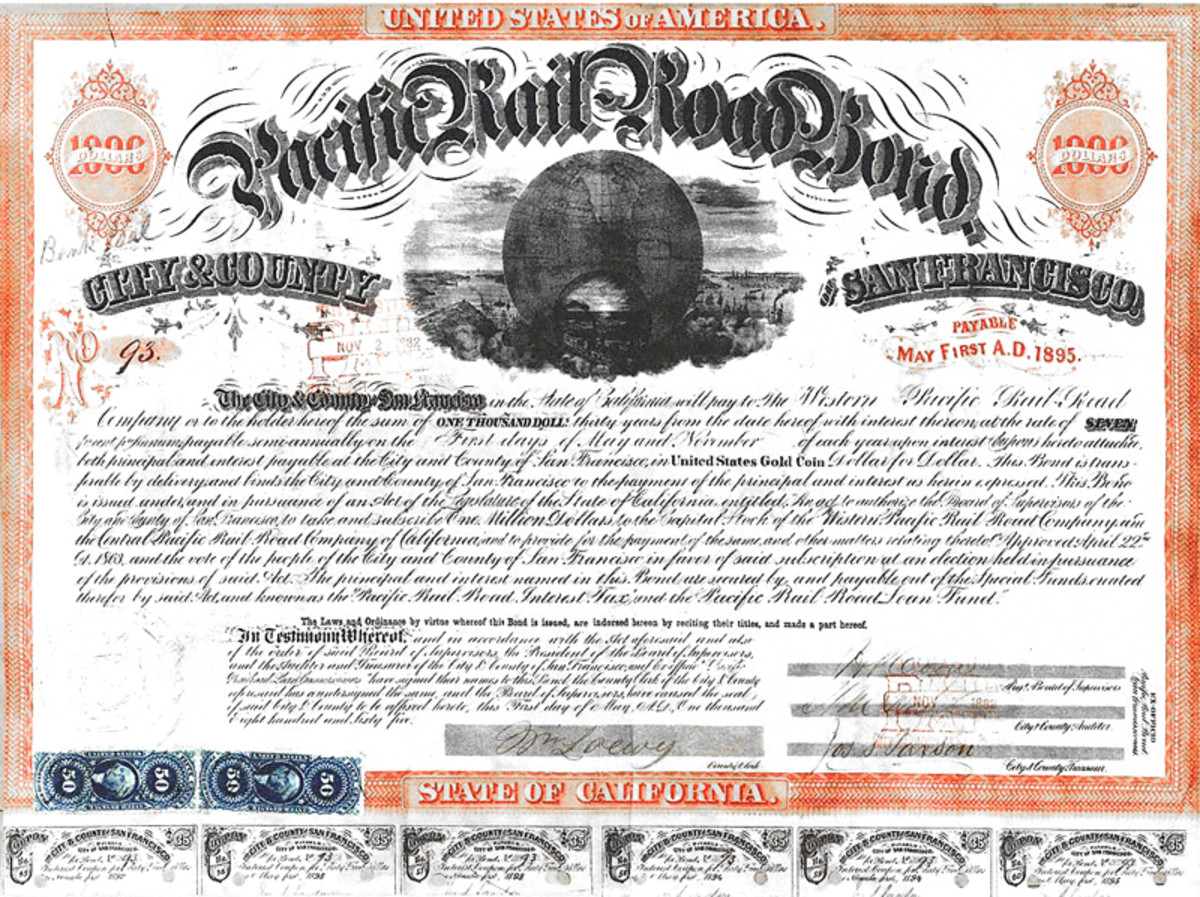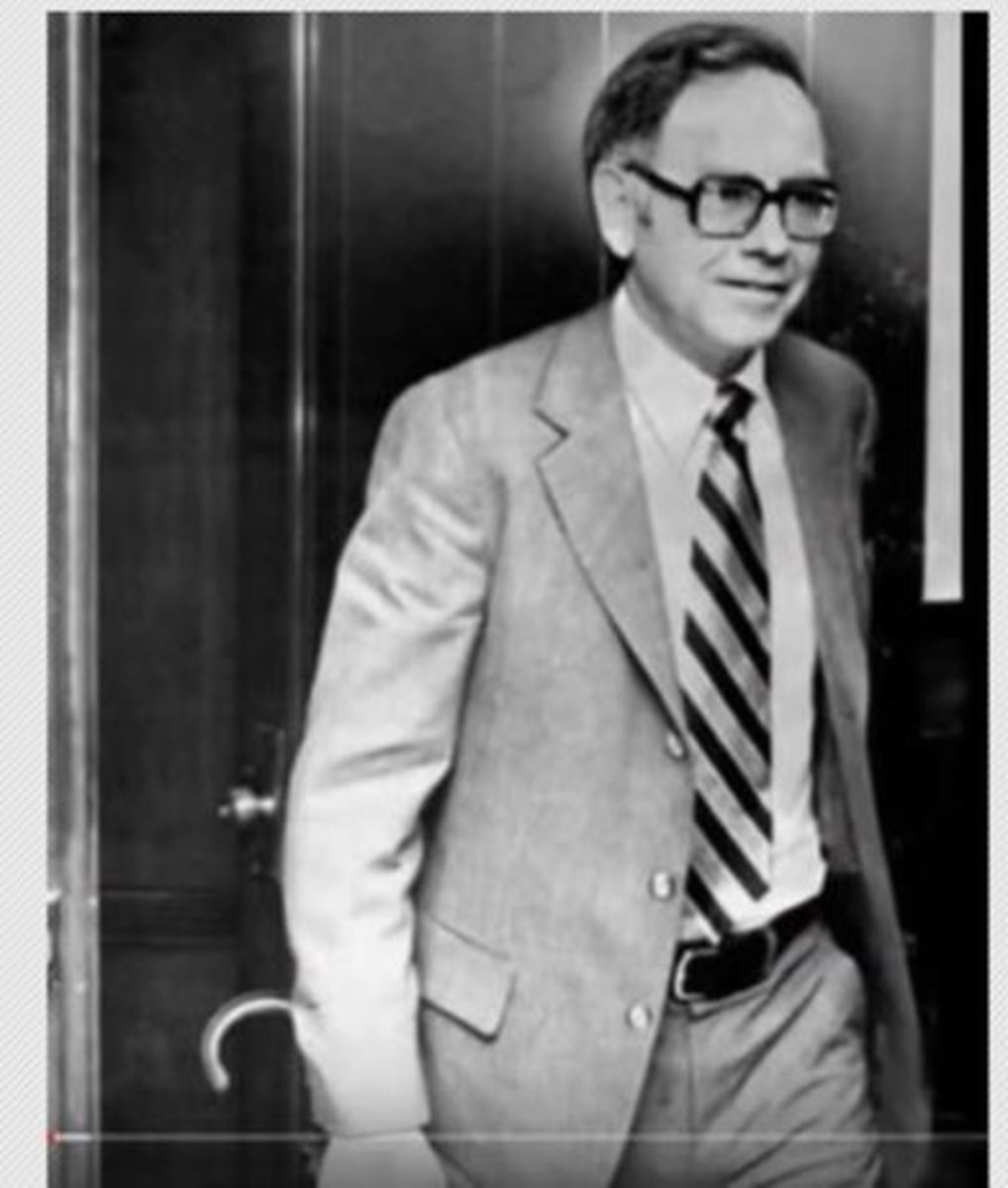Treasury Bond Auctions
The Federal Reserve Bank
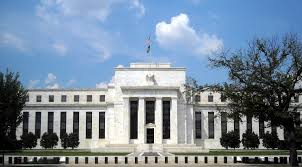
Quantative Easing - QE2
Before I look at how treasury bonds are issued it would be timely to look at what the Federal Reserve has been doing for months. They have been electronically printing around $600 billion and flooding the worlds economy with dollars. They have been buying treasury bonds from the capital markets. Not in one go but the purchases are the equivalent of $75 billion treasury bonds each month for several or so months.
Why are they doing this? Well they are doing it in the name of quantitative easing. In other words easing credit around the world by pushing down treasury bond rates so other money market rates and interest rates will follow suit and also weakening the dollar which would help US exports and in turn should force investors into more riskier assets such as stocks, corporate bonds and currencies. This effort should help to booster the American economy. The problem is that a weaker dollar could push the price of oil and commodities up. This in turn could threaten an inflation surge which although the Federal Reserve has said that it would pull the dollars out of the market if that was the case, might not be able to do it in time. Also the Fed that cannot control where the dollars end up and some countries such as Brazil are already putting a premium on the importation of dollars to avoid their currency strengthening too much and undermining their economy. This has led to some emerging markets accusing the US of starting a 'currency war.'
If the economy doesn't pick up the Fed could buy more bonds and keep interest rates as low to zero as possible to stop deflation and go for controled inflation.
Competative Auction
U.S. Treasury securities are issued by competitive auction and are generally issued in the maturities and according to the schedule shown below. However, because the Treasury’s goal is to minimize interest costs, it will occasionally change the frequency of auctions or the instruments offered to better match investor demand. In the mid 1980s, the five-year note was issued only once every quarter, and the Treasury regularly issued four-year, seven-year and twenty-year instruments.
The regular schedule may also be changed for political or budget reasons. For example, a Congressional delay in raising the debt ceiling might cause the Treasury to delay or even cancel an issue.
Instrument
| Time to maturity
| Auction Schedule
|
|---|---|---|
T-Bills
| 13 weeks
| weekly
|
26 weeks
| weekly
| |
1 year
| monthly
| |
T-Notes
| 2 years
| monthly (last day)
|
3 years
| once per three months 15th
| |
5 years
| monthly (last day)
| |
10 years
| once per 2 months (15th)
| |
T-Bonds
| 30 years
| 3 times a year (15th)
|
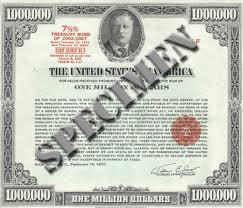
Treasury Bond
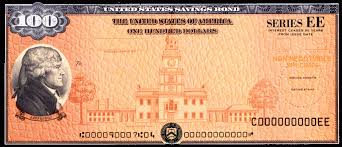
Treasury Bill
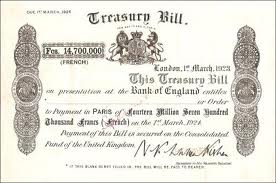
Auction Details Announced
The week before an auction (usually on Wednesday), the Treasury announces the details of the forthcoming auction.
The most important detail is the amount to be auctioned. If it is larger than expected, it can cause a sell off in the market; if it’s smaller than expected, it can cause a rally.
The Treasury also indicates whether there will be a new issue or whether the old issue will be reopened. If there is a reopening, the coupon rate for the previous issue will be used. If the issue will be a new issue, the coupon will be determined by the auction process.
If interest rates are very close to the coupon rate of the previous issue, the Treasury often issues more of the previous issue rather than creating a new one. This is referred to as “reopening an issue.”
Once the auction is announced, dealers begin to trade the new bond or note on a "when issued" basis. When-issued trading ceases and all when-issued trades are settled when the Treasury actually issues the bond about one week after the auction.
After the coupon rate is announced at the auction, when-issued trades are quoted like any other bond trade, using prices. However, before the coupon rate is set, dealers quote yields, not prices because without a coupon rate a price cannot be set.
The week after the announcement, the auction is held. To participate, a dealer must submit a bid to the New York Fed by 1:00 p.m. New York time on auction day. A bid specifies the yield the dealer wants and the amount the dealer is bidding for. Non-dealers may submit bids either through a dealer, or directly to the Fed.
There is a relationship between the bids made to the Fed at 1:00 p.m. and the yields being offered in the when-issued market at that time. Bidders want the highest interest rate they can get. There would be no point in bidding a yield to the Fed that is lower than the yield one could get on the when-issued market. Auction bids therefore tend to be higher than the yield in the when-issued market. In other words, the when-issued offer typically sets the yield floor.
Currently, the Treasury uses both regular and dutch auctions to issue its notes and bonds. In the regular auction competative bidders receive the yield they bid, however, in a Dutch auction all bidders receive the same yield, that being the highest yield bid in the distribution group.
On the issue date, about a week after the auction, the Treasury delivers the new bonds or notes and receives payment from the successful bidders. This is also the day that when-issued trades settle. After the issue date, Treasury trades settle on the normal T+1 schedule.
Investment
Hve you ever invested in government securities?
Secondary Market
Arguably, the secondary market for U.S. Treasury bonds and notes is the most liquid and most active bond market in the world. On average, about $150 billion of Treasury bonds and notes are traded each day.
The most recently issued bond or note of a particular maturity is called the “on-the-run” issue.
The bid/offer spread on on-the-run issues is only two 32nds and that the spread on other issues of the same maturity is no more than a few 32nds. This is typical and reflects the high liquidity of the Treasury market. It also means that the spreads dealers can make are extremely thin.
If a dealer’s spread is 1/32nd, on a $1,000,000 bond the dealer would make $312.50.
The secondary market is a 24-hour market. The official trading day begins in Japan during U.S. evening hours. At about 3:00 a.m. New York time, activity switches to Europe. Finally, at about 8:00 a.m. New York time, the heaviest trading of the day begins with the opening of the U.S. market.
The U.S. Treasury market is an over-the-counter market. The most important market makers in this market are called Primary Government Securities Dealers. There are about forty of these and they include many of the largest banks and brokerages in the world as well as a few specialty firms.
The New York Fed appoints primary dealers and monitors their activities. To become a primary dealer, a firm must commit to making an ongoing two-sided market in all Treasury securities. In addition, the firm must demonstrate to the Fed that it already has a substantial trading volume in government securities. Once becoming a primary dealer, the firm must report on its government securities trading activities to the Fed. In return, the Fed conducts its open market operations through the primary dealers.
One of the ways the Federal Reserve controls the size of the money supply in the economy is through its open market operations. By purchasing government securities in the open market, the Fed injects more money into the economy. By selling government securities, it removes money from the economy.
A dealer who makes a two-sided market will always quote both a bid and an offered price. In other words, the dealer is always willing to either buy or sell. The existence of market makers willing to make a two-sided market at any time is critical to building investor confidence and market liquidity.
Primary dealers trade with each other - in a market known as the “inside market” - and with their customers.
Primary dealers trade with each other through a government securities brokerage network called the “inside market”. The brokers of the inside market deal exclusively with primary dealers and, by providing a certain degree of confidentiality, allow individual dealers to keep their market tactics unknown to their competitors.
Each broker places a quote screen on the trading desk of each of the primary dealers and establishes a direct phone link.
A dealer desiring to offer a particular bond will call one of the brokers with its offer and minimum quantity. If this is the best offer the broker has received, he will immediately post it on the screen.
A similar process would be followed for a dealer wishing to place a bid.
Once posted, the bids and offers are live and must be honored by the posting dealer until canceled.
A dealer who wishes to hit a bid or take an offer calls the broker and initiates a trade. This dealer is called the “aggressor”.
The broker informs the market that a deal is taking place by flashing the rate or posting the words "hit" or “take” on the screen. Notice that the broker also flashes the quantity being traded. The aggressor can ask to do a larger quantity than posted, but the posting dealer is not obligated to respond.
The customers of primary dealers can include secondary dealers, regional banks, institutional investors such as pension funds and mutual funds, government agencies, and foreign investors. Typically, a dealer will deal with these customers through a sales desk.
A customer desiring to buy or sell a particular government security will call the sales desk and request a market for a specific amount of a particular issue.
The sales person will call the trading desk and request a quote. If the quote is acceptable, the customer will buy or sell the security at that price.
Even though customers are not participants in the inside market, they have various ways of finding out what is going on there. First, one broker, Cantor-Fitzgerald, makes its screens available to non primary dealers. Second, the Government Securities Act of 1992 requires brokers to disseminate the best aggregate bid and offer to the public. This information is distributed through a system called GOVPIX which is available through many quote vendors.
Information keeps prices low. Because customers know where the market is, they are unwilling to accept significant spreads over inside prices. Dealers normally quote bids and offers to institutions which match the best bids and offers on the inside market.
The Long and the Short of It
If the price of a bond is rising, a trader might buy the bond and he would say he was “going long” and then wait for prices to rise then sell the bond at a profit.
A trader can also make money when the price of a bond is falling by selling the bond first. He would say he was “going short” because he is actually selling a bond he doesn’t own. He would then wait until prices drop, then buy the bond he needs to cover the sale.
You may be wondering how a trader can sell a security he doesn’t own, particularly if he doesn’t plan to buy a security to cover this sale for several days.
He can make such a sale if the market provides mechanisms for borrowing securities, such as repurchase agreements and securities borrowing programs. Using one of these mechanisms, a trader can borrow the security he must deliver for his sale and replace the security he has borrowed when he eventually buys the securities in the market.
A repurchase agreement, or “repo”, is simply an agreement to sell a Treasury at one price and repurchase it at a specific future date at a higher price. In effect, a repo is like a colateralized borrowing where the Treasury security represents the collateral given to the lender, and the difference between the selling price and the repurchase price represents the interest paid for the loan. The term of a repo is usually one day, though longer-term repos are sometimes done.
If a dealer needs a particular security to cover a short position, he can do a reverse repo or resale. This is simply a repurchase agreement in reverse. For example, this dealer has decided that he should be short in a particular bond and has just executed a sale.
Because he does not intend to buy a bond immediately to cover the sale, he borrows one by doing an overnight reverse repo with another dealer. In effect, he loans cash to another dealer and receives a security as collateral.
Of course, our dealer intends to deliver the security he receives to cover his sale. So when tomorrow comes, he must either buy a security in the marketplace to meet his reverse repo commitment, or do another reverse repo.
Zero Coupon Bonds
Some investors want the security of a U.S. Treasury bond but want to avoid the reinvestment risk associated with coupon payments. Investors who are trying to fund known future liabilities often seek to avoid this uncertainty.
To address this need, dealers and, eventually, the Treasury itself started creating zero coupon Treasuries by treating each of a bond’s payments, both coupon and principal, as a separate investment and selling them separately. Like any zero coupon security, these new creations pay no interest during their lifetime. They simply return the face value at maturity. They generate interest for the holder by being sold at a discount to their face value.
The earliest forms of zeros were created by the dealers and given animal names such as CATs and TIGERs. Eventually, the Treasury began its STRIPS program. The dealers created zeros by buying a regular Treasury bond, placing it in trust, then selling the right to each coupon or principal payment as a separate investment. “Cats” and “Tiger” are the names given by two major dealers to their products of this type. Under the Strips program, each coupon and final principal payment for any bond or note is assigned a separate CUSIP number. Anyone who purchases a bond is then free to sell any of the coupon or principal payments to anyone else. Strips are quoted, like regular bonds, as a percentage of par in points and 32nds. The Treasury issues a monthly report telling how much of any bond or note has been stripped.
If the prices of a Treasury bond and its zero coupon components are in balance, an investor should be indifferent as to whether he buys a whole bond or its zero coupon parts. His return should be the same. However, because markets are imperfect, these prices sometimes get out of line. Dealers constantly monitor the relationship between bonds and their zeros, and are prepared to strip when the zeros are dear, or reconstitute when the coupon bond is dear.
How are Treasury Bonds Cleared and Settled
Most Treasury securities are held in book entry form in accounts maintained by banks at the Federal Reserve. These accounts hold the securities of both the banks themselves and their customers. Because every bank also maintains a reserve account, or cash account, at the Fed, settling a Treasury trade between the customers of two different banks is simply a matter of instructing the Fed to make the proper cash and security transfers.
Suppose, for example, a customer of Bank A wishes to transfer a bond to a customer of Bank B. Upon receiving instructions from its customer, Bank A will simply instruct the Fed via Fedwire to transfer the bonds from its account to the account of Bank B. The Fed will make the appropriate cash and security transfers and notify B of the transaction. Bank B will then record the bonds in the account of its customer. Fedwire is a computerized communication network connecting U.S. commercial banks with the Federal Reserve Banks. It is the heart of the U.S. funds transfer system. Because every commercial bank must maintain a reserve account at the Fed, funds transfers can be made almost immediately by simply debiting one reserve account and crediting another. The Fedwire system is also used for transferring the ownership of Treasury securities held in book-entry form.
If both customers have accounts at bank A, no Fed transfer is required. The bank will simply reduce the bond account of customer A and increase the bond account of customer B on its own books.
Because of the heavy volume of trade in U.S. Treasury securities, the Fedwire transfer system became cumbersome and experienced frequent backlogs. To rectify the problem, the industry established the Government Securities Clearing Corporation ("GSCC"). The GSCC nets each day’s trades within the dealer community and transfers only the net balances over Fedwire.
For example, suppose dealer A sells a bond to dealer B who in turn sells the bond to dealer C. Instead of two Fed wire transfers, GSCC procedures reduce the number to one: a transfer from A to C. Since dealers trade back and forth many times in one day, the GSCC has significantly reduced the required number of wire transfers.



